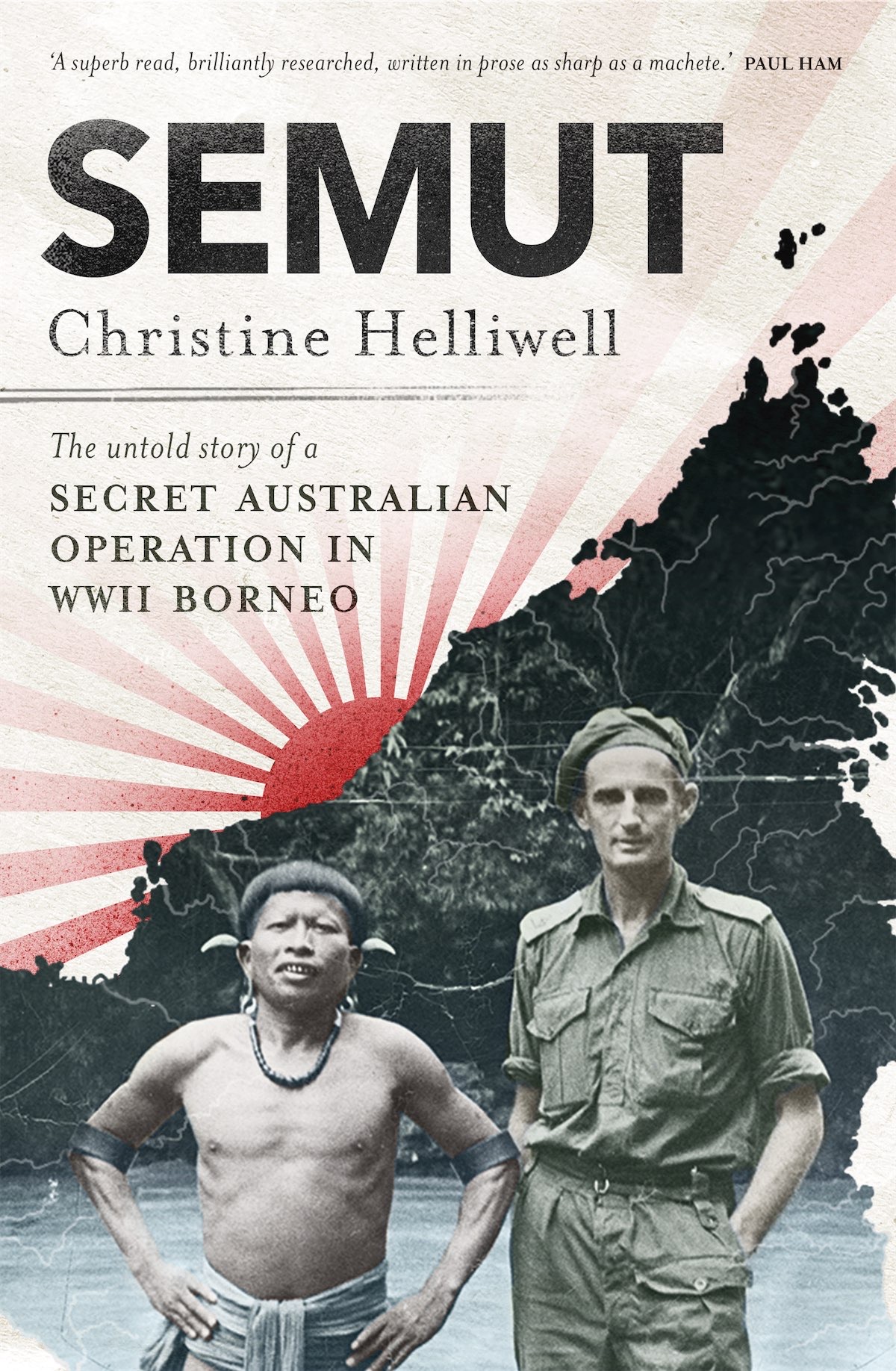
UPDATED April 29
A CANBERRA writer who made it to the top three nominations for Britain’s most admired award for historical military history writing, the Templer Medal, has come a “very close” second in the Templer Prize for her book “Semut”

Awarded annually to the author of the book that has made the most significant contribution to the history of the British Army or the army of any country in the British Commonwealth, it has rarely if ever gone to an Australian and in 40 years has only ever been won once by a woman.
It’s an exceptional achievement for an exceptional book, which I couldn’t put down.
Christine Helliwell’s “Semut” (ant in the Malay language), published by Penguin, deals with the little known 1945 covert operation in World War II carried out by British and Australian operatives, who engaged the local Dayak people to white-ant (hence the title) Japanese military operations in what is now the Malaysian Sarawak.
An anthropologist of 40 years standing and now an emeritus professor at the ANU who, since 2014 has been researching World War II in Borneo, she spent many years as a young student living in longhouses in Borneo falling in love with the Dayak people.
Helliwell breathes life into her extraordinary account of the operation, presented to the locals as a move to defeat the Japanese but in reality designed to reinstate British rule in Borneo, something neither the Aussies nor the Dayaks knew.
Although a formally trained academic, Helliwell was well aware that books like this can languish on shelves unread, so she deliberately sought to make it as exciting as possible.
“I had to learn to write for the general public because academic writing is so different, so I took myself to a Dymocks for a day and sat there reading popular accounts of military history,” she says.
Laying down an explanation of the word “Dayak” at the beginning of the book so the layperson can follow it, she builds up a picture of the cultural differences between the different groups – obviously in particular the Kelabit, Iban, the Kayan and Kenyah people.
In part a lament for the vanishing forests, the book is at times very sad. You can almost hear the cacophony of the forest as well as its subtleties and Helliwell’s story of the elusive Penan hunter who suddenly appears out of nowhere, later followed by his fellows, is memorable, conjuring up what one writer has called the Bornean “inbuilt jungle radar”.
Helliwell’s dramatic accounts of the raids are nothing short of racy. There’s the ambush at Marudi, the battle for Kapit and massacre at Pasir Nai, where many Japanese heads are taken.
Her masterly explanation of the spiritual traditions behind the ancient Borneo custom of taking heads, conveniently revived for the campaign by the British and Australians, puts headhunting in cultural perspective, and indeed in the book almost had me calling out “Ooo, Ooo, Ooo” along with the Kayan headhunters returning from a successful raid.
For those who love military history, there are the campaigns themselves, which will be further elaborated in her next book.
It is tempting to speculate as what the Society for Army Historical Research Templer Medal judges will make of her accounts of mendacity of the Brits, the egos of characters such as Major Tom Harrisson, the unfairness of the treatment of Major Toby Carter and the contempt in which many of the indigenous people of Borneo were held.
All these negatives are mediated by the knowledge that, post-war, the peoples of Sarawak did eventually gain the right to rule themselves, one hopes, with the modest exercise of power that Helliwell sees in their great tribal leaders.
Helliwell is delighted to have been nominated for The Templer, describing herself as “gobsmacked, if truth be told – I never imagined that ‘real’ military historians would much enjoy my little story about Dayaks during World War II”.
The winner and joint second-prize winners of the Templer Medal were announced in the UK on April 28. Ms Helliwell reports that she came a “very close” second.
Who can be trusted?
In a world of spin and confusion, there’s never been a more important time to support independent journalism in Canberra.
If you trust our work online and want to enforce the power of independent voices, I invite you to make a small contribution.
Every dollar of support is invested back into our journalism to help keep citynews.com.au strong and free.
Thank you,
Ian Meikle, editor




Leave a Reply